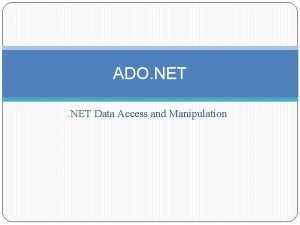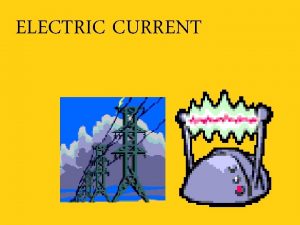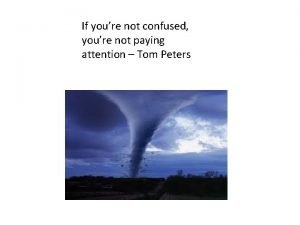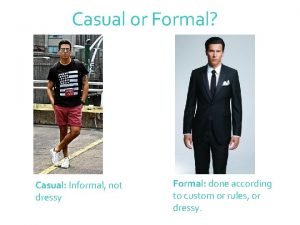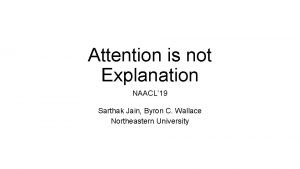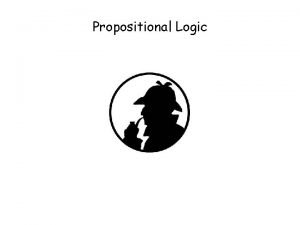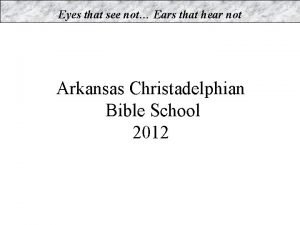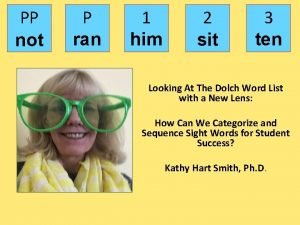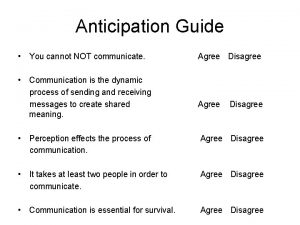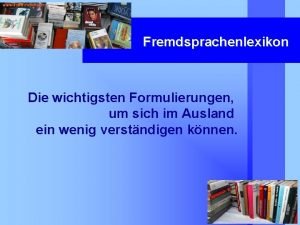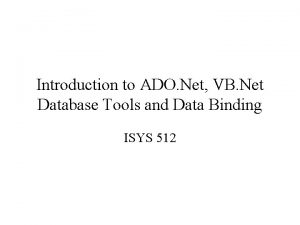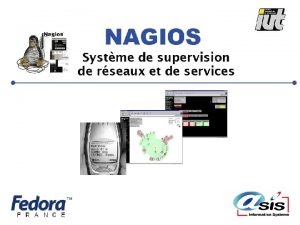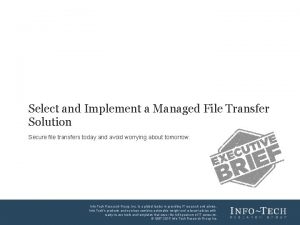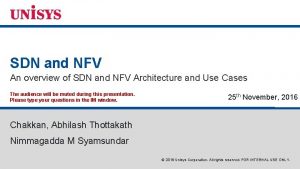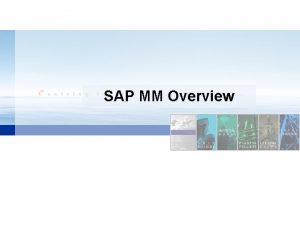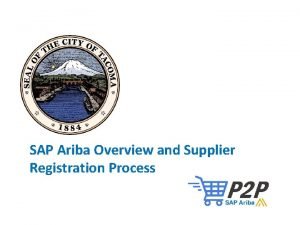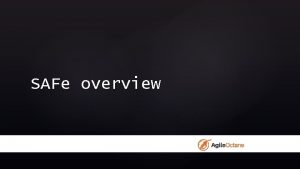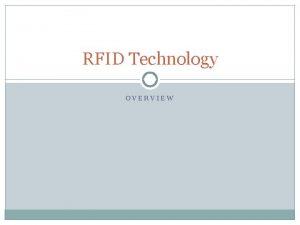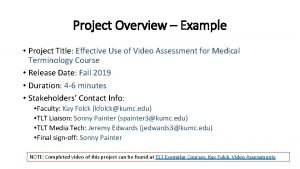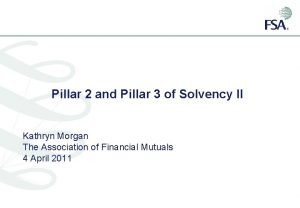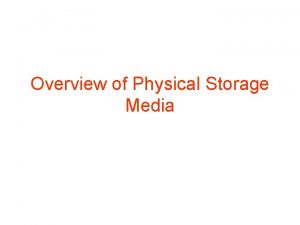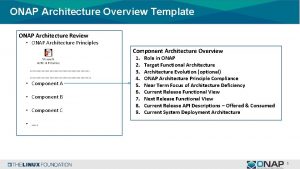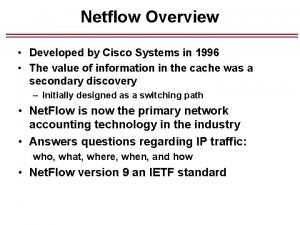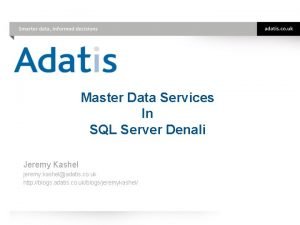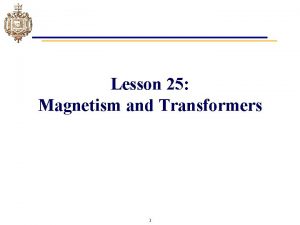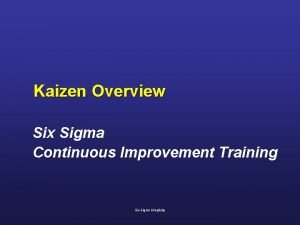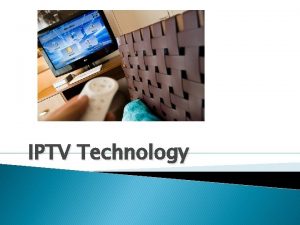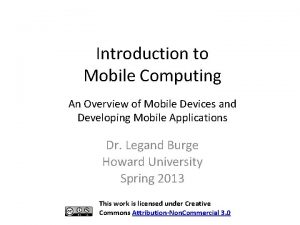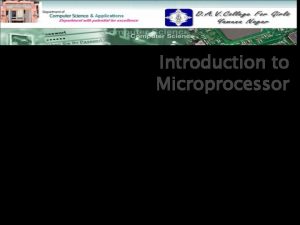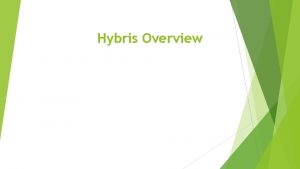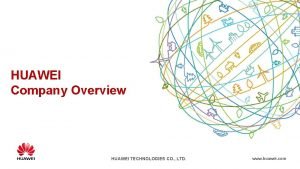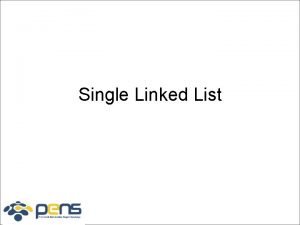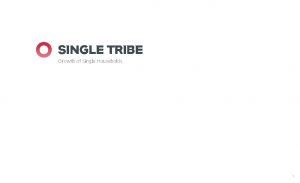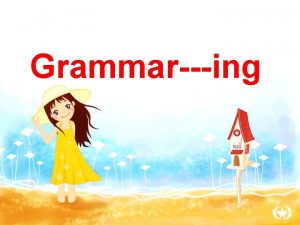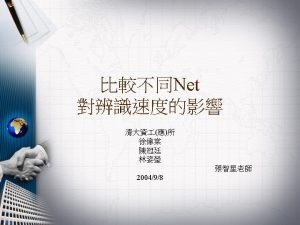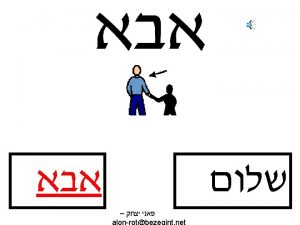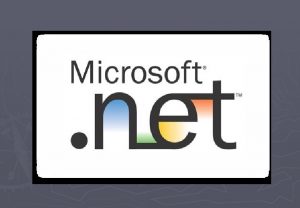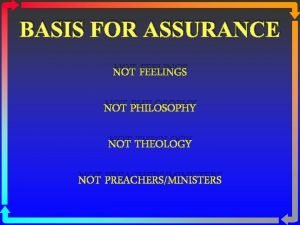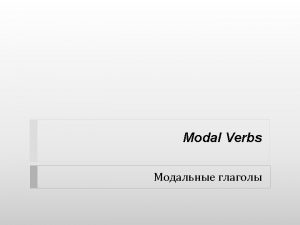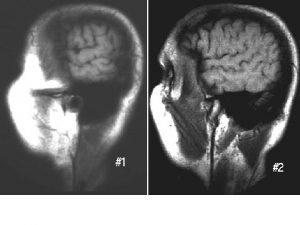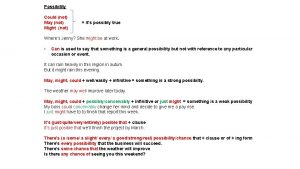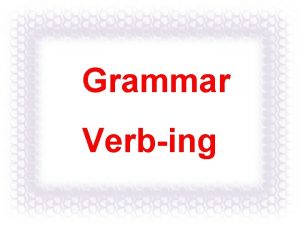Overview on NET NET is not a single







































































- Slides: 71

Overview on. NET • . NET is not a single programming language. • It includes: • • Visual Basic Visual J# Visual C++ Visual C# • All these languages has the same source code

Why all these programming languages in. NET? • There are several programmers that are sensitive to the programming languages they love • We can make programming team, with different. NET programming language. • Some programming has a strong points that preferable by people

Visual Studio, . NET, and the IDE • Visual Studio 2008 is a suite of products that includes the. NET Framework 3. 5 and the Integrated Development Environment (IDE) you will be using • The. NET Framework supports four programming languages • Visual Basic, Visual C#, Visual C++, Visual J# • Also COBOL, with more to come • The Visual Studio IDE is your interface to. NET -it is used to develop applications in any of the supported programming languages 1/16/2010 12: 05 PM

The. NET Framework • Provides a common set of services that can be used when programming in any supported language • Enables you to write programs that run on any operating system on any hardware platform • Main components … • . NET Framework Class Library (FCL) • Common Language Runtime (CLR) 1/16/2010 12: 06 PM

The. NET Framework (raising the bar) 1/16/2010 12: 07 PM

Introduction to The Integrated Development Environment • Sometimes the IDE is referred to as Visual Studio – but it is only one part of VS • The IDE is the interface between the programmer and the. NET tools he or she uses • Includes design components for Console, Web, and Windows development (to name a few) • Includes an editor for all. NET languages as well as XML and HTML 8/10/2008 6: 34 PM

Initial Visual Basic Screen Chapter 2 - VB 2008 by Schneider 7

Chapter 2 –Visual Basic, Controls, and Events • 2. 1 An Introduction to Visual Basic • 2. 2 Visual Basic Controls • 2. 3 Visual Basic Events Chapter 2 - VB 2008 by Schneider 8

2. 1 An Introduction to Visual Basic 2008 • Why Windows and Why Visual Basic -(GUIs), icons, Menues, buttons - Comparing it with DOS • How You Develop a Visual Basic Application • The Different Versions of Visual Basic Chapter 2 - VB 2008 by Schneider 9

Visual Basic 2008 • Language used to create Windows applications. • Provides a Graphical User Interface or GUI. • The sequence of instructions executed in the program is controlled by events. Chapter 2 - VB 2008 by Schneider 10

Sample Input Screen Chapter 2 - VB 2008 by Schneider 11

How to Develop a Visual Basic Application • Designing the screen of VB project, is a key element of planning VB program • Design the Interface for the user. • Determine which events the controls on the window should recognize. • Write the event procedures for those events. Chapter 2 - VB 2008 by Schneider 12

Different Versions of Visual Basic • • Version 1. 0 – 1991 Version 2. 0 – 1992 Version 3. 0 – 1993 Version 4. 0 – 1995 Version 5. 0 – 1997 Version 6. 0 – 1998 Visual Basic. NET – 2002 (NOT BACKWARD COMPATIBLE WITH EARLIER VERSIONS) • Visual Basic 2005 – November 2005 • Visual Basic 2008 – November 2007 Chapter 2 - VB 2008 by Schneider 13

2. 2 Visual Basic Controls • • Invoking Visual Basic Text Box Control Button Control Label Control List Box Control Name Property Help / Fonts / Auto Hide Positioning and Aligning Controls Chapter 2 - VB 2008 by Schneider 14

Visual Basic Start Page Chapter 2 - VB 2008 by Schneider 15

Start a New Project Chapter 2 - VB 2008 by Schneider 16

New Project Dialog Box Chapter 2 - VB 2008 by Schneider 17

Initial Visual Basic Screen Chapter 2 - VB 2008 by Schneider 18

Toolbox Chapter 2 - VB 2008 by Schneider 19

3 Ways to Place a Control from the Toolbox onto the Form Window • Double-click • Drag and Drop • Click, Point, and Drag Chapter 2 - VB 2008 by Schneider 20

Four Controls at Design Time Text box To select a control, click on it. Sizing handles will appear when a control is selected. Chapter 2 - VB 2008 by Schneider 21

Text Box Control • Used for input and output • When used for output, Read. Only property is set to True Tasks button Sizing handles Chapter 2 - VB 2008 by Schneider 22

Properties Window Press F 4 to display the Properties window for the selected control. Categorized view Alphabetical view Chapter 2 - VB 2008 by Schneider 23

Properties Window Selected control Properties Settings Chapter 2 - VB 2008 by Schneider 24

Some Often Used Properties • • Text Autosize Font. Name Font. Size Fore. Color Back. Color Read. Only Chapter 2 - VB 2008 by Schneider 25

Setting Properties • Click on property name in left column. • Enter its setting into right column by typing or selecting from options displayed via a button or ellipses. Chapter 2 - VB 2008 by Schneider 26

Setting the Text Property 1. Click on Text property. 2. Type your first name Chapter 2 - VB 2008 by Schneider 27

Setting the Fore. Color Property 1. Click on Fore. Color. 2. Click on button at right of settings box. 3. Click on Custom tab to obtain display shown. 4. Click on a color. Chapter 2 - VB 2008 by Schneider 28

Font Property 1. Click on Font in left column. 2. Click on ellipsis at right of settings box to obtain display shown, 3. Make selections. Chapter 2 - VB 2008 by Schneider 29

Button Control • The caption on the button should indicate the effect of clicking on the button. • Text property determines caption. Chapter 2 - VB 2008 by Schneider 30

Add an "access key" Chapter 2 - VB 2008 by Schneider 31

Label Control • Used to identify the contents of a text box. • Text property specifies caption. • By default, label automatically resizes to accommodate caption on one line. • When the Auto. Size property is set to False, label can be resized manually. Used primarily to obtain a multi-rowed label. Chapter 2 - VB 2008 by Schneider 32

List Box Control • Initially used to display several pieces of output. • In Chapter 9 used to select from a list. • Does not have a Text property • Items property Chapter 2 - VB 2008 by Schneider 33

The Name Property • Used by the programmer to refer to a control in code • Setting for Name property near top of Properties window. • Name must begin with a letter, be less than 215 characters long, and may include numbers and letters. • Use appropriate 3 - or 4 -character naming prefix Chapter 2 - VB 2008 by Schneider 34

Control Name Prefixes Control Prefix Example button btn. Compute label lbl. Address text box txt. Address list box lst. Output Chapter 2 - VB 2008 by Schneider 35

Renaming the Form • Initial name is Form 1 • The Solution Explorer window lists a file named Form 1. vb. • To rename the form, change the name of this file to new. Name. vb • new. Name should begin with prefix frm. Chapter 2 - VB 2008 by Schneider 36

Auto Hide • Hides Toolbox when not in use • Vertical push pin icon indicates auto hide is disabled. • Click the push pin to make it horizontal and enable auto hide. Push pin Chapter 2 - VB 2008 by Schneider 37

Positioning Controls Proximity line Chapter 2 - VB 2008 by Schneider 38

Aligning Controls Snap line Chapter 2 - VB 2008 by Schneider 39

Aligning Controls Snap line Chapter 2 - VB 2008 by Schneider 40

Tab Order Tab index The tab indices determine the order in which controls receive the focus during tabbing. Chapter 2 - VB 2008 by Schneider 41

2. 3 Visual Basic Events • An Event Procedure Walkthrough • Properties and Event Procedures of the Form • The Header of an Event Procedure Chapter 2 - VB 2008 by Schneider 42

Event • An event is an action, such as the user clicking on a button • Usually, nothing happens in a Visual Basic program until the user does something and generates an event. • What happens is determined by statements. Chapter 2 - VB 2008 by Schneider 43

Sample Statements • txt. Box. Fore. Color = Color. Red • txt. Box. Visible = True • txt. Box. Text = "Hello World" General Form: control. Name. property = setting Chapter 2 - VB 2008 by Schneider 44

Sample Form txt. First txt. Second btn. Red Chapter 2 - VB 2008 by Schneider 45

Focus • When you click on a text box, a cursor appears in the text box, and you can type into the text box. • Such a text box is said to have the focus. • If you click on another text box, the first text box loses the focus and the second text box receives the focus. Chapter 2 - VB 2008 by Schneider 46

Examples of Events • btn. Show. Click • txt. Box. Text. Changed • txt. Box. Leave General Form: control. Name. event Chapter 2 - VB 2008 by Schneider 47

The three steps in creating a Visual Basic program: 1. Create the interface; that is, generate, position, and size the objects. 2. Set properties; that is, configure the appearance of the objects. 3. Write the code that executes when events occur. Chapter 2 - VB 2008 by Schneider 48

Code Editor tab Form Designer tab Method Name box Class Name box Chapter 2 - VB 2008 by Schneider 49

Structure of an Event Procedure Private Sub object. Name_event(. . . ) Header Handles object. Name. event statements End Sub (. . . ) is filled automatically with (By. Val sender As System. Object, By. Val e As System. Event. Args) Chapter 2 - VB 2008 by Schneider 50

Create an Outline for an Event Procedure; i. e. header and End Sub • Double-click on a control or • Use the Class Name and Method Name boxes. (We nearly always use the first method. ) Chapter 2 - VB 2008 by Schneider 51

Sample Form txt. First txt. Second btn. Red Double Click on txt. First Chapter 2 - VB 2008 by Schneider 52

Code for Walkthrough Public Class frm. Demo Private Sub txt. First_Text. Changed(. . . ) Handles txt. First. Text. Changed End Sub End Class Chapter 2 - VB 2008 by Schneider 53

Code for Walkthrough Public Class frm. Demo Private Sub txt. First_Text. Changed(. . . ) Handles txt. First. Text. Changed txt. First. Fore. Color = Color. Blue End Sub End Class Chapter 2 - VB 2008 by Schneider 54

Intelli. Sense Automatically pops up to give the programmer help. txt. First. Chapter 2 - VB 2008 by Schneider 55

Code Editor Click tab to return to Form Designer Chapter 2 - VB 2008 by Schneider 56

Sample Form txt. First txt. Second btn. Red Double-click on btn. Red Chapter 2 - VB 2008 by Schneider 57

Code for Walkthrough Public Class frm. Demo Private Sub txt. First_Text. Changed(. . . ) Handles txt. First. Text. Changed txt. First. Fore. Color = Color. Blue End Sub Private Sub btn. Red_Click(. . . ) Handles btn. Red. Click End Sub End Class Chapter 2 - VB 2008 by Schneider 58

Code for Walkthrough Public Class frm. Demo Private Sub txt. First_Text. Changed(. . . ) Handles txt. First. Text. Changed txt. First. Fore. Color = Color. Blue End Sub Private Sub btn. Red_Click(. . . ) Handles btn. Red. Click txt. First. Fore. Color = Color. Red End Sub End Class Chapter 2 - VB 2008 by Schneider 59

Event Procedure txt. First. Leave • Select txt. First from Class Name box drop -down list. • Select Leave from Method Name box drop-down list. Chapter 2 - VB 2008 by Schneider 60

Code for Walkthrough Private Sub txt. First_Leave(. . . ) Handles txt. First. Leave End Sub Private Sub txt. First_Text. Changed(. . . ) Handles txt. First. Text. Changed txt. First. Fore. Color = Color. Blue End Sub Private Sub btn. Red_Click(. . . ) Handles btn. Red. Click txt. First. Fore. Color = Color. Red End Sub Chapter 2 - VB 2008 by Schneider 61

Code for Walkthrough Private Sub txt. First_Leave(. . . ) Handles txt. First. Leave txt. First. Fore. Color = Color. Black End Sub Private Sub txt. First_Text. Changed(. . . ) Handles txt. First. Text. Changed txt. First. Fore. Color = Color. Blue End Sub Private Sub btn. Red_Click(. . . ) Handles btn. Red. Click txt. First. Fore. Color = Color. Red End Sub Chapter 2 - VB 2008 by Schneider 62

Header of Event Procedure Private Sub btn. Red_Click(…) Handles btn. Red. Click Name, can be changed. Identifies event Private Sub Button_Press(…) Handles btn. Red. Click Chapter 2 - VB 2008 by Schneider 63

Handling Multiple Events Event procedure can be invoked by two events. Private Sub Happening(. . . ) Handles btn. Red. Click, txt. Second. Leave txt. First. Fore. Color = Color. Red End Sub Chapter 2 - VB 2008 by Schneider 64

Altering Properties of the Form • The following won't work: frm. Demo. Text = "Demonstration" • The form is referred to by the keyword Me. Text = "Demonstration" Chapter 2 - VB 2008 by Schneider 65

Text File • Holds data to be processed by programs. • Can be created, viewed, and managed by the Visual Basic IDE. • Create: Use “Add New Item” input dialog box. • View: Click on filename in Solution Explorer. • Manage: Use Solution Explorer like Windows Explorer. Chapter 2 - VB 2008 by Schneider 66

Sample Text File Mike Jones 9. 35 35 John Smith 10. 75 33 PAYROLL. TXT Chapter 2 - VB 2008 by Schneider 67

Sample Text File name hourly wage hours worked Mike Jones 9. 35 35 John Smith 10. 75 33 PAYROLL. TXT Chapter 2 - VB 2008 by Schneider 68

Our Text File Convention • PAYROLL. TXT uses one item of data per line. That will be our convention in this book. Chapter 2 - VB 2008 by Schneider 69

Use Property Window to View all Possible Events for a Control Events button Chapter 2 - VB 2008 by Schneider 70

Open and Run an Existing Program • • • Click on Open Project in the File menu. Navigate to the program’s folder. Click on the program’s folder. Double-click on the file with extension. sln. In the Solution Explorer double-click on the file with extension. vb. (The Form Designer will appear. ) • Press F 5 to run the program. Chapter 2 - VB 2008 by Schneider 71
 Not genuine not true not valid
Not genuine not true not valid Ado.net overview
Ado.net overview Sisd in computer architecture
Sisd in computer architecture Single instruction single data
Single instruction single data Multi channel multi phase example
Multi channel multi phase example An electric current is the net movement of
An electric current is the net movement of If you're not confused you're not paying attention
If you're not confused you're not paying attention Casual vs informal
Casual vs informal Attention is not not explanation
Attention is not not explanation Too broad too narrow
Too broad too narrow If p then not q truth table
If p then not q truth table Just right scale
Just right scale Love is not all about
Love is not all about Eyes that see not ears that hear not
Eyes that see not ears that hear not P ran
P ran If you can't measure it you can't improve it
If you can't measure it you can't improve it We will not be moved you're standing with us
We will not be moved you're standing with us Not a rustling leaf, not a bird in flight
Not a rustling leaf, not a bird in flight You cannot not communicate
You cannot not communicate Achmed lach net
Achmed lach net Ado.net vb.net
Ado.net vb.net Www.overview
Www.overview Maximo overview
Maximo overview Uml overview
Uml overview Uml overview
Uml overview Vertical overview
Vertical overview Figure 12-1 provides an overview of the lymphatic vessels
Figure 12-1 provides an overview of the lymphatic vessels Systemic circulation flow chart
Systemic circulation flow chart Texas public school finance overview
Texas public school finance overview Walmart
Walmart Stylistic overview of philippine art
Stylistic overview of philippine art How can we integrate oop with sd/sa
How can we integrate oop with sd/sa Spring framework overview
Spring framework overview Nagios tactical overview
Nagios tactical overview Market overview managed file transfer solutions
Market overview managed file transfer solutions Sdn nfv overview
Sdn nfv overview Sbic program
Sbic program Sap mm organization structure
Sap mm organization structure Sap ariba overview
Sap ariba overview Safe overview
Safe overview Rfid technology overview
Rfid technology overview Review paper introduction
Review paper introduction Virusmax
Virusmax Overview project example
Overview project example Blood supply of stomach flowchart
Blood supply of stomach flowchart Abstract vs summary
Abstract vs summary Solvency 2 pillar 1
Solvency 2 pillar 1 Types of physical storage media
Types of physical storage media Example of nursing process
Example of nursing process Overview funding programmes
Overview funding programmes Ospf overview
Ospf overview Onap architecture overview
Onap architecture overview Antigone episode 3
Antigone episode 3 Cisco show top talkers
Cisco show top talkers Overview on the national tuberculosis elimination program
Overview on the national tuberculosis elimination program Mpls header format
Mpls header format Azure overview
Azure overview Master data services overview
Master data services overview Overview of cellular respiration
Overview of cellular respiration Respiration overview
Respiration overview Cellular respiration
Cellular respiration Total atp produced in cellular respiration
Total atp produced in cellular respiration Transformer overview
Transformer overview 1 improvement per day
1 improvement per day Itil brief overview
Itil brief overview Iptv technology
Iptv technology Overview of mobile computing
Overview of mobile computing Mnemonics microprocessor
Mnemonics microprocessor Target customers of kfc
Target customers of kfc Moritz zimmermann sap
Moritz zimmermann sap Huawei company overview
Huawei company overview Eylf meaning
Eylf meaning

